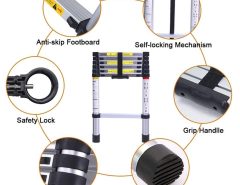Having a fire extinguisher at home can help you put out fires before they begin to spread. But not all fire extinguishers are the same. In the UK, different types are used for different kinds of fires.
An Understanding of the Fire Classes Is Important
Fires are divided into different classes based on what is burning. Class A refers to fires from wood, paper, cloth or furniture. Class B relates to fires from flammable liquids like petrol, oil or paint, and Class C refers to fires caused by gas leaks. Class D relates to fires from metals which are not common in homes. Electrical fires are fires caused by electrical equipment, and Class F are fires from cooking oils.
What Are the Types of Fire Extinguishers?
Each type is designed for specific fire classes. Water is a red label, and it’s for Class A fires. It is not safe for electrical or grease fires. The foam one has a cream label and is for Class A and B fires. A range of P50 foam extinguishers is available from local suppliers, including https://www.lsfiresolutions.co.uk/fire-extinguishers/ecoextinguishers/p50. The CO? has a black label and is for electrical and Class B fires. It does not leave a residue, making it ideal for electronics. A dry powder has a blue label and it works on Class A, B and C and electrical fires, but can create dust. Wet chemical, which has a yellow label, is for Class F or cooking oil fires. The wrong class of extinguisher being used can actually increase the size of a fire.
Where Should Fire Extinguishers Be Placed?
They should be freely available for people to use at home and in the office. They can be placed in the kitchen, the living room and bedrooms, the garage or shed and near electrical equipment. They are aimed at both homes and businesses.
What About Maintenance Tips?
Check the pressure gauge and the expiry date regularly. Learn how to use the fire extinguisher. Remember: pull, aim, squeeze and sweep. Most importantly, have a fire escape plan in place.



Leave a Reply